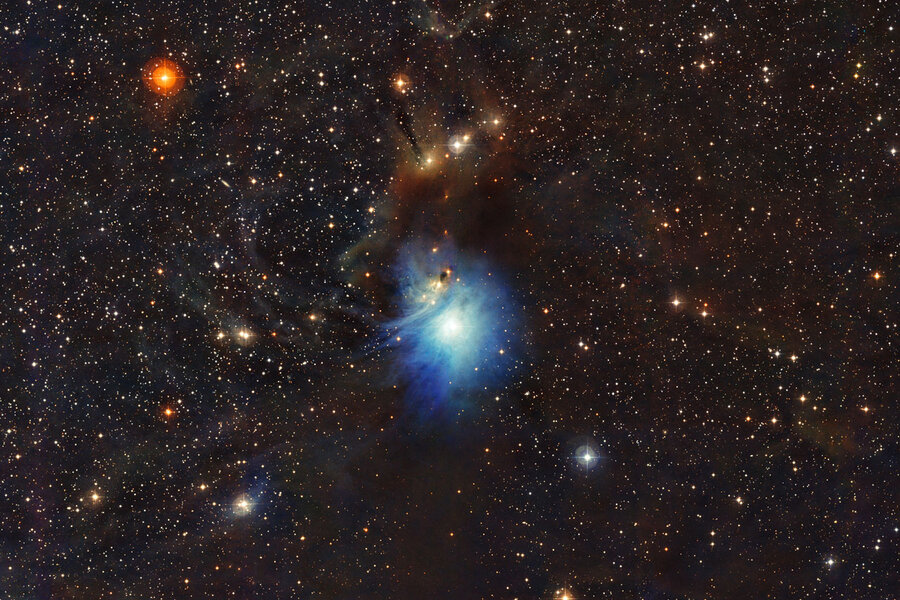A star is born: How stellar newborn illuminates a hidden nebula
Loading...
A luminous newborn star has been captured by the European Southern Observatory.
On Wednesday, the ESO released a stellar image of a newly formed star illuminating the cosmic sky as its light reflects off surrounding clouds. Captured by the ESO’s La Silla Observatory in Chile, the image depicts cosmic diffusion effect caused by the clouds.
The large swath of illumination visible in the image above does not resemble the ordinary light of a star. Dust in the clouds surrounding new star HD 97300 cause the light to be diffused, “like a car headlight in enveloping fog,” according to the press release. The illuminated portion is referred to as reflection nebula IC 2631.
Reflection nebulas have long been favorite subjects for space agency cameras. The reflection nebulas are known for not emitting any of their own light, being illuminated purely from other, embedded sources, usually young stars, according to the NASA press release from 2008 showing off a spectacular photograph of the reflection nebula NGC 1999 captured by the Hubble Space Telescope.
The newly photographed IC 2631 is the brightest nebula in a large region of space filled with gas and dust clouds known as the Chamaeleon Complex. The complex is about 500 light-years away from the Chamaeleon constellation.
The light source of the nebula, star HD 97300, is one of the youngest, most massive, and brightest stars in that regions of space. However, while its size may be initially intimidating, astronomers believe the star is in an initial stage of a process that will see it shrink down to a smaller size.
HD 97300 will likely face competition over the next few millennia. The dust and clouds that diffuse its light and the dark nebulae, or clouds of gas so dense they prevent light from escaping, are the key ingredients needed to make new stars.
The ESO captured the image in Chile with the MPG/ESO 2.2-meter telescope. The La Silla observing site where the image was taken from is one of three major sites the ESO runs in Chile, after Paranal and Chajnantor.
The ESO is supported by 16 European countries and the host country of Chile.






